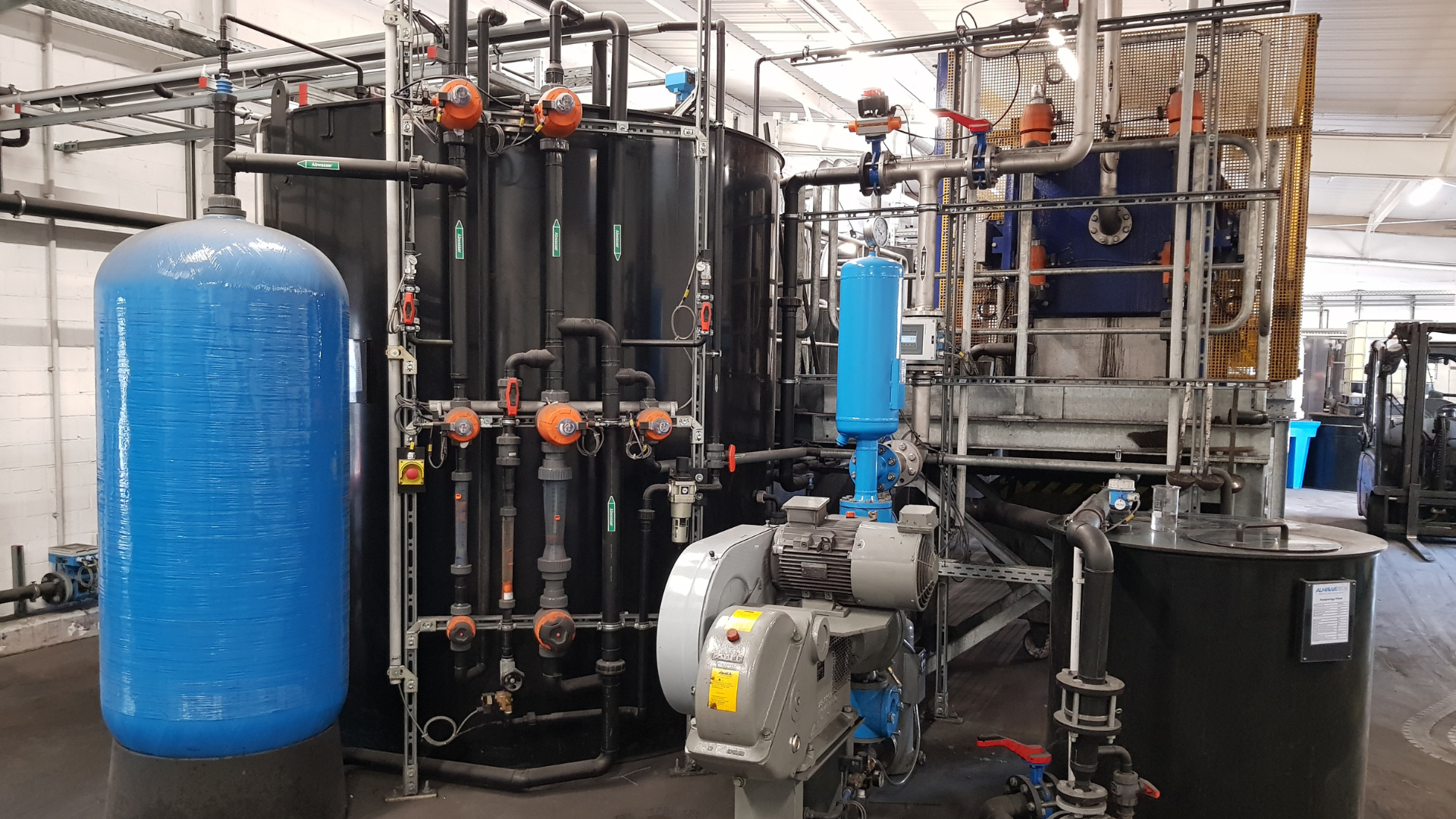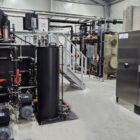Diaphragm pumps are one of the most versatile pump technologies in water and wastewater treatment. They are used in a variety of processes, including dosing chemicals, pumping abrasive or viscous media and emptying tanks. Their unique functionality, combined with high chemical resistance and reliability, makes them an indispensable tool in the industry.
Table of contents
How a diaphragm pump works
Diaphragm pumps work according to the positive displacement principle. The main components are a flexible diaphragm, two valves (inlet and outlet valve) and a drive unit. The pumping process can be described as follows:
Suction stroke:
The diaphragm is pulled back by the drive unit, creating a vacuum.
The inlet valve opens and the liquid is drawn into the pump chamber.
Pressure stroke:
The diaphragm moves forward and exerts pressure on the liquid.
The outlet valve opens and the liquid is pumped into the pressure line.
Self-priming:
Diaphragm pumps can pump liquids from deep containers without external suction aids.
Types and materials of diaphragm pumps
1. drive types:
Pneumatic:
Compressed air drive, ideal for potentially explosive atmospheres.
Simple control via air pressure and air volume.
Mechanical:
Driven by electric motors or mechanical systems.
Greater precision and efficiency.
Hydraulic:
Use of a hydraulic system to move the diaphragm.
Suitable for high pressure requirements.

Photo: Electric diaphragm pump for feeding our chamber filter press for dewatering precipitation sludge from the ALMA CHEM MCW CP system
2. membrane materials:
PTFE (polytetrafluoroethylene): High chemical resistance, ideal for aggressive media.
EPDM (ethylene propylene diene monomer): Cost-effective and versatile.
NBR (nitrile rubber): Good resistance to oils and grease.
Viton: High temperature and chemical resistance.
Advantages of diaphragm pumps
1. versatility:
Conveying media with different viscosities and chemical compositions.
Suitable for abrasive, viscous and sensitive liquids.
2. chemical resistance:
Use in applications with aggressive chemicals such as acids, alkalis or solvents.
3. self-priming:
Pumps liquids from deep containers without external aids.
4. dry-running capability:
In contrast to other pump types, diaphragm pumps can run dry without damage.
5. safe operation:
Pneumatically operated diaphragm pumps are explosion-proof and therefore suitable for ATEX areas.
6. ease of maintenance:
Simple design facilitates maintenance and the replacement of wearing parts.
Challenges and solutions
1. wear of the diaphragm:
Problem: Diaphragms can be damaged by abrasive media or high pressures.
Solution: Use wear-resistant materials such as PTFE or reinforced EPDM.
2. pressure losses:
Problem: Insufficient valve tightness leads to inefficiencies.
Solution: Regular maintenance of the valves and checking for wear.
3. energy consumption with compressed air drive:
Problem: Pneumatic diaphragm pumps have a higher energy consumption.
Solution: Optimization of the air pressure and use of energy-efficient compressed air systems.
Conclusion
Due to their versatility, efficiency and robustness, diaphragm pumps are an indispensable tool in industrial water and wastewater technology. Their ability to pump abrasive, chemically aggressive or sensitive media makes them suitable for numerous applications. With a well thought-out selection of materials and drive technologies as well as regular maintenance, diaphragm pumps offer a long-lasting and cost-effective solution.
For further information on our products, please feel free to contact us at any time!








